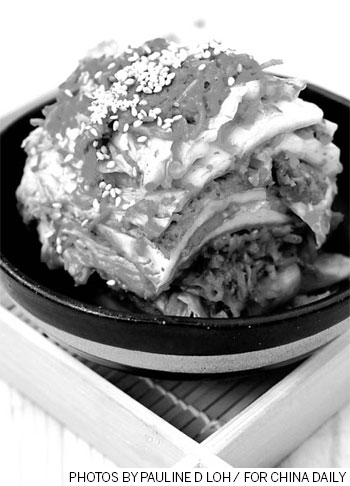Getting in a pickle
By Pauline D Loh (China Daily)
Updated: 2010-04-24 09:53
 |
Large Medium Small |
Homemade preserves are easy to do and a lot cheaper than buying ready-made at the markets. Pauline D Loh introduces you to their pleasures, Korean-style
Kimchi is about as Korean as the latest K-pop TV serials starring delectable cheesecake and beefcake actors with perfect skin and sexy dimples. And just like those dreamboats, kimchi can also make your smooch-ready lips pucker up.
But unlike unrequited love for a TV actor, developing a fascination for these deliciously tart pickles is good for you. They promote digestion, stimulate the appetite and easily fulfill your quota of fruits and vegetables for the day.
They are also becoming immensely popular as more and more cross-border eateries proliferate in all our major cities. Bulgogi, dulsot, bibimbap and kimchi fried rice are all almost as popular as our native noodles.
Asia is such a vast continent of ethnic diversity and geographical contrast that its many varied cuisines can make a hungry gourmet happy 24/7 for a whole year and more. The cuisines are all rich in flavor and history and every traditional dish tells its own story.
Pickles have a lineage that spans at least three countries and cuts across the culinary heritage of China, Korea and Japan. Their epicurean roots also tell of the migration of people, food and dining customs.
There has been a long, ongoing debate on whether kimchi belongs to Korean or Japanese cuisine. The Chinese, confident that they invented these pickles, have stayed out of the debate, finding it a waste of time to argue on what they already know is the truth.
But you have to admit that the Koreans have the upper hand in successful marketing kimchi as their own.
